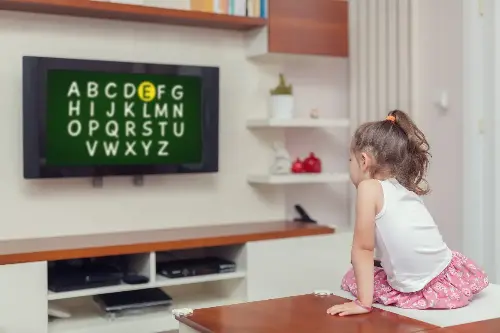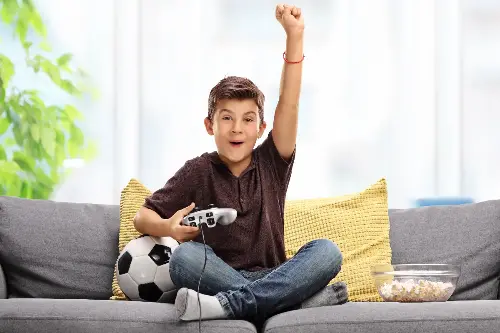Understanding how children perceive the vast array of media around them is crucial for mindful parenting. In a world where screens are an omnipresent aspect of life, from TVs to social media, videos, games to movies, it’s vital to comprehend the inner workings of your child's mind as they engage with digital content.

The Influence of Visual Mediums
For children, television and movies are not just about entertainment; they're a colourful tapestry from which they start making sense of the world. Children's brains are highly plastic, meaning they're able to absorb information and adapt to environments at an impressive rate.
When a child watches a TV show or a movie, they are not just passively receiving content; they are actively interpreting it. From understanding social norms to learning language nuances, visual media offers children a playground for cognitive and emotional development.
However, what they see doesn't always translate to what we, as adults, perceive. Where we see a simple cartoon, a child might see a complex narrative filled with emotion, learning cues, and behavioural models. It's important to consider the content in terms of age-appropriateness, as younger viewers may not differentiate between reality and fiction as easily as older children do.
Decoding the Digital Playground
Social media videos and games are particularly intriguing when it comes to evaluating children's mental processing. Here, interaction is a key component, often making the experience more engaging and, at times, addictive. Children are drawn to the immediacy and interactivity of these platforms, which provide instant feedback and a sense of accomplishment.
Within this digital playground, kids create their digital identity and, in turn, receive validation through likes, shares, and comments. This can heavily influence their self-esteem and social standing, thus shaping their view of themselves and their peers.
For children, understanding the balance between the online world and the physical world is an ongoing process. The boundaries can often blur, leading to a unique, sometimes skewed, perception of reality. Parental guidance is essential to help children navigate these waters safely and thoughtfully.

The World Through a Game Lens
Interactive games, in particular, offer a unique insight into child psychology. In games, children find an environment where they can experiment with actions and consequences in a risk-free setting. However, the way children interact with games can also reveal how they perceive challenges, rewards, and even failure.
Moreover, games have the potential to impact a child’s cognitive skills, such as problem-solving and strategic thinking, as well as emotional skills like patience and empathy, depending on the nature of the game. It's also essential to be mindful of the content within these games, as they can convey messages about violence, gender roles, and other societal issues.
The Reality of Virtual Interaction
It's imperative to understand that for children, there's often a fine line between the digital and real worlds. They may form genuine emotions and attachments to characters and virtual friends, treating them as real components of their social circles. It’s a fusion of reality that can be tricky for adults to fully grasp.
For children growing up with these technologies, the digital realm is an extension of their real-life experiences. It influences their expectations of social interaction, learning, and entertainment, moulding their reality in ways previous generations might not easily relate to.

The Key to Mindful Media Engagement
As a counterbalance to the digital deluge, mindfulness about media engagement is key. Encouraging discussions about content and guiding children through the maze of messages they receive every day can strengthen their critical thinking and discernment.
For parents, involvement doesn’t necessarily mean restriction, but rather participating in and understanding the virtual environments their children inhabit. Through mindful engagement, children can be taught to appreciate media as a tool for learning and creativity, rather than just consumption.
Ultimately, our job as guardians, educators, and role models is to forge a path of understanding and guidance through the rich landscape of modern media. Recognising that each child will perceive content through their unique cognitive and emotional lens is the first step towards fostering healthy media habits.
The keys to unlocking the benefits of digital media for children lie in open communication, age-appropriate content choices, and the encouragement of reflective thinking about what they watch, play, and interact with. By doing so, we can help shape their digital experiences to be as enriching and positive as possible, safeguarding their development in this digitally-dominated age.
